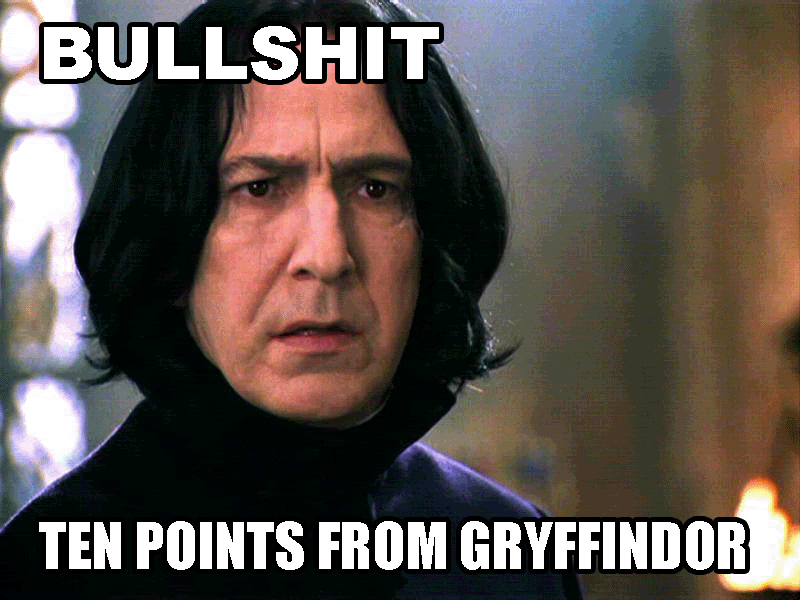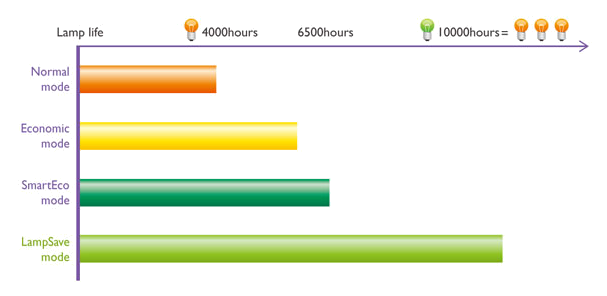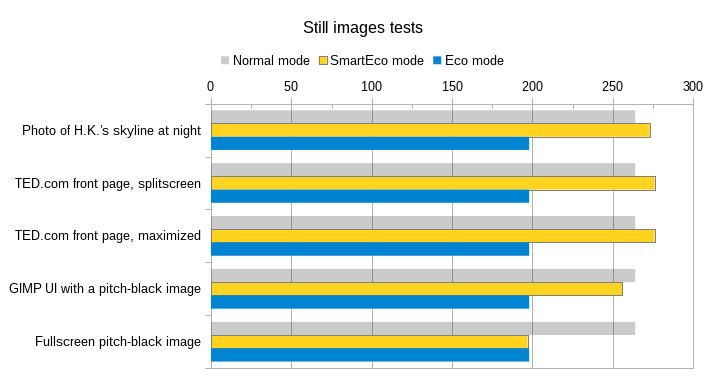Here are some findings I’ve been meaning to post for a while.
A bit over a year ago, I fulfilled a decade-long dream of owning a good projector for movies, instead of some silly monitor with a diagonal measured in “inches”. My lifestyle very rarely allows me to watch movies (or series*), so when I decide to watch something, it needs to have a rating over 90% on RottenTomatoes, it has to be watched with a bunch of friends, and it needs to be a top-notch audio-visual experience. I already had a surround sound system for over a decade, so the projector was the only missing part of the puzzle.
After about six months of research and agonizing over projector choices, I narrowed it down to the infamous BenQ W1070, which uses conventional projection lamps (Aaxa’s LED projectors were not competitively priced at that time, costing more for a lower resolution and less connectivity):

In the process of picking up the BenQ W1070, I compared it to the Acer H6510BD and others, and this particular question came up: how realistic are manufacturers’ claims about their dynamic “lamp life saving” features?
The answer is:

For starters, I asked Acer to clarify what their “Extreme Eco” feature really did, and to their credit they answered truthfully (emphasis mine):
Acer ExtremeEco technology reduces the lamp power to 30% enabling up to 70% power savings when there is no input signal, extending the lifespan of the lamp up to 7000 hours and reducing operating costs. 4,000 Hours (Standard), 5,000 Hours (ECO), 7,000 Hours (ExtremeEco)*
*: Lamp Life of ExtremeEco mode is based on an average usage cycle of 45 minutes ECO mode plus 75 minutes ExtremeEco (30% lamp power) mode
Yeah. “When there’s no input signal”. What kind of fool leaves a home theater projector turned on while unused for extended periods of time and thinks it won’t destroy the lamp’s life?
Now you’re wondering if Acer is the only one trying to be clever about marketing and if other manufacturers actually have better technology for lamp savings. After all, BenQ is very proud to say this (direct quote from their website):
By detecting the input content to determine the amount of brightness required for optimum color and contrast performance, the SmartEco Mode is able to reduce lamp power while delivering the finest image quality. No compromise!
Bundled with this chart, no less:

So, perhaps the widely acclaimed BenQ W1070 projector’s “SmartEco” mode is a truly smart psychovisual image analysis system that continously varies the intensity to make darker scenes go extra-dark, darker than the “constant” Eco Mode? Glad you asked, because I have the numbers to prove that’s not the case either.
I measured the BenQ W1070’s power consumption through a 3×6 conditions experiment:
- Power scheme:
- Normal mode
- Eco mode
- SmartEco mode
- Content type:
- A photo of the Hong Kong skyline at night
- A static view of the TED.com website, split-screen at 50% of the width, on top of the Hong Kong image
- A static view of the TED.com website, maximized
- GIMP 2.10, maximized, with a pitch-black image and a minimum amount of UI controls (menubar, rulers, scrollbars, statusbar) as bright elements
- That same 100% pitch-black static image, fullscreened
- Playing Sintel and measuring the total electricity consumption over 15 minutes, in kWh
Here are some of the “content type” conditions above, so you have an idea what the static images looked like:

Here is a visual summary of the results for the “static images” conditions:

And here are the raw numbers:
| Normal mode | Eco mode | SmartEco mode | ||
| Static H.K. night skyline photo | 264 watts | 198 watts | 273 watts | |
| Static TED.com split-screen | 264 watts | 198 watts | 276 watts | |
| Static TED.com maximized | 264 watts | 198 watts | 276 watts | |
| Static GIMP (almost pitch-black) | 264 watts | 198 watts | 256 watts | |
| Static pitch-black image (fullscreen) | 264 watts | 198 watts | 198 watts | |
| 15 minutes movie (Sintel) | 0.066 kWh | 0.0495 kWh | 0.06x kWh | |
Note: for the Sintel benchmark, the “0.06” figure lacks one decimal compared to the two other conditions (Normal and Eco modes). This is due to display limitations of my measurement instrument; other values were calculated (as they are constant) and confirmed with the measurement instrument (ex: Eco mode was measured to be at 0.04x kWh). It is thus possible that SmartEco’s 0.06 kWh was anywhere from 0.060 to 0.069 kWh.
As you can see, BenQ’s SmartEco provided no significant advantage:
- With normal/bright still images, it increases consumption by as much as 3% compared to the full-blast “normal mode”; it reduces consumption by the same amount (3%) when displaying very dark images, and does not under any circumstances (even a 100% pitch black screen) fall below the constant power consumption value of the regular “Eco mode”.
- In practice, while watching movies that combine light and dark scenes, “SmartEco” mode might (or might not) reduce energy consumption compared to “normal mode”, by a small amount.
- SmartEco will always be outperformed by the regular “eco mode”, which yields a constant 25% power saving.
Out of curiosity, I also tested all the other manual image settings in addition to “eco mode”, including: brightness, contrast, color temperature, “Brilliant Color” (on/off); none of these settings had any effect on power consumption.
My conclusion and recommendation:
- “Smart” eco modes are dumb and will eat your lamps.
- With current technology, home theater projectors should be locked down to a constant lamp economy mode to maximize longevity and gain other benefits; after all, you’re supposed to be sitting in a pitch-black room to maximize contrast and quality with any projector anyway, and the lower lamp power setting will also reduce heat, and thus cooling fan noise.
Nonetheless, the W1070 is a very nice projector.
*: When I tell people I don’t watch any series at all, including [insert série-du-jour here], I typically get reactions like this:

Comments
7 responses to “"SmartEco" or "Extreme Eco" projector lamp power saving modes are a trap”
Hey Jeff,
totally agree with that. I’ve got a SANYO PLV-Z700 for 5 years now and I always run it in a completely dark room with shutters closed, so it isn’t a problem to dim the lamp to eco mode from a picture quality point of view. However, the first lamp blew after just barely above 2000 hours (i think 2010h or so), even though it’s specified for 2000 hours in normal or 3000 hours in eco-mode.
Thanks a lot for your post, I also bought a W1070 few months ago (love it!) but didn’t know all that. 🙂
I’m not that concerned with operating power usage, for all I care it could be 200 or 300 watt. But my living room projector uses a whopping 36W in stand-by mode. Doing nothing, besides waiting for me to turn it on! That is in no way acceptable.
I don’t care about the electricity consumption per se (electricity is clean and really cheap where I live), it was just a way to measure the lamp’s intensity, which I posit must be directly related to its lifespan.
hello
Bought a w1070 three years ago, I always used smart eco and my bulb is still bright after 6000 hours. (and I’m not the only one).
Smart-eco for benq just work for me and many others. Your conclusion is a little weird.
If SmartEco does not under any visual circumstances (including a solid black fullscreen image) lower lamp intensity below the fixed “Eco mode”, then it can’t be better than “Eco mode” for the lamp’s lifespan, as simple as that.
Also, beware perceptions of brightness after years of use. Unless you measured it with a spectrophotometer or compared with a new lamp bulb, you can’t tell for sure that your current 6000hrs+ lamp is even remotely as bright as it was. And in my case, with the static Eco mode and everything turned down, I still consider it crazy bright (again: this is a home theater set-up).
Benq w2000: I made a test with some movie. I used watt viewer.
Averages:
Normal mode: 286 watt (always 286)
Eco mode: 207 watt (always 207)
SmartEco: 240 watt ( between 206-285)
In smartceco mode the picture better than normal mode. So bright than normal.